Long Island Sound Report Card release in Westport, Connecticut
Suzanne Webster ·On June 8, 2015 the Integration & Application Network and its many partners held two simultaneous press conferences to announce the first report card about the health of Long Island Sound. Bill Dennison and Alex Fries traveled to Glen Cove, New York, on the south shore of the Sound, while Caroline Donovan and I headed north to the Sherwood Island State Park Nature Center in Westport, Connecticut. The Connecticut release was enormously successful, attracting several news crews and enough people to fill every seat in the room.

Lynn Dwyer, Assistant Director of the Northeastern Region National Fish and Wildlife Foundation served as the mistress of ceremonies. Dwyer began the event by welcoming United States Senator Richard Blumenthal, who spoke of the national significance of the Long Island Sound estuary, referring to the Sound as "one of our nation's most precious and fragile natural resources". Blumenthal also stressed the importance of widespread cooperation across the region in order to protect the Sound and reminded the crowd that "the water doesn't respect legal boundaries ... so we are all in this fight together".
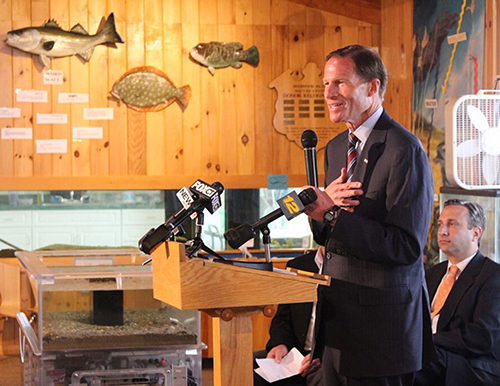
Next, Connecticut State Senator Bob Duff addressed the importance of the Long Island Sound on a local state-wide level, and delivered the encouraging message that the health of the Sound has improved over the past several decades as a result of local stewardship. Robert Hust, Water Bureau Assistant Director at Connecticut Department of Energy and Environmental Protection, explained that there have been many improvements in water quality over the past decade, noting that most of the pollution in the Sound now originates from non-point sources, such as stormwater run-off from roads, rather than from sewage treatment plants or factories. Although in many ways Long Island Sound is cleaner than it was 20 years ago, challenges remain to sustaining and further improving its health. Earthplace Executive Director Tony McDowell grew up in Norwalk, Connecticut, and shared several personal and historical anecdotes demonstrating the value of Norwalk Harbor as a community resource. He said that locals will have to work together in order to improve the health of the Harbor and move the grade of a C+ to an A on future report cards.
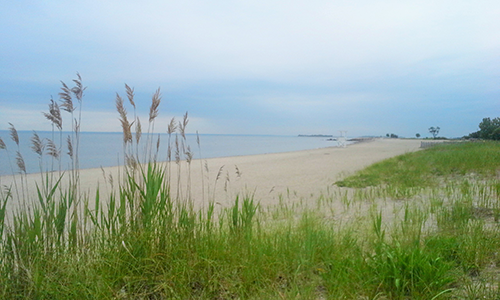
After these speeches, everyone was eager to learn the results of two new report cards detailing the health of both the Norwalk Harbor in Connecticut, as well as the overall Long Island Sound. Caroline Donovan, Program Manager of the Integration & Application Network at the University of Maryland Center for Environmental Science revealed the grades and explained the scientific processes involved in producing the Long Island Sound and the Norwalk Harbor report cards, by providing a detailed account of water quality and biotic scores for each. Grades in the Sound ranged from an "F" in the Western Narrows to an "A" in the Eastern subregion, corresponding with increased development pressures towards New York City.
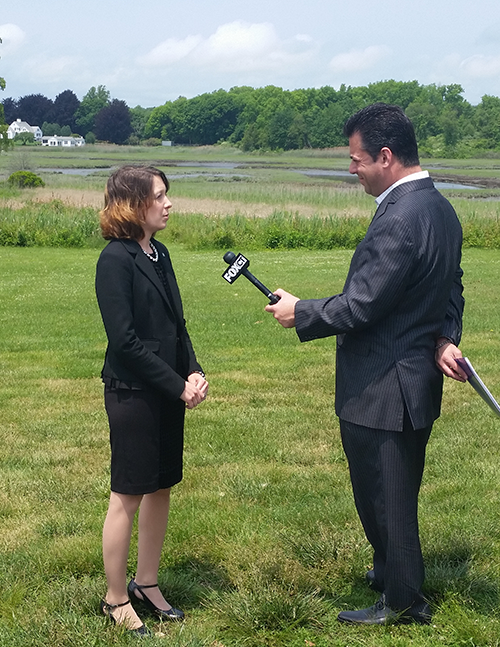
Finally, Hugh "Tripp" Killin, III, the Executive Director of the Jeniam Foundation, which helped fund the report card, concluded the press conference by detailing how people can take action to help improve the sound and local waterways. "Millions of people have a cumulative impact ... so some of the solutions are going to be complex (and) are going to require millions of people."
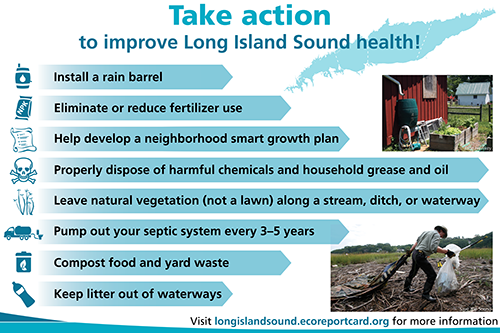
It is very important that the public can access information about the current health of the Sound, as well as how individual actions can help or harm water quality. Now that the report card has been released, we look forward to seeing the actions everyone will take to work together to fix the sound. For more information on the development of the Long Island Sound and Norwalk Harbor report cards, and to view regionally-specific water quality grades, please visit longislandsound.ecoreportcard.org.
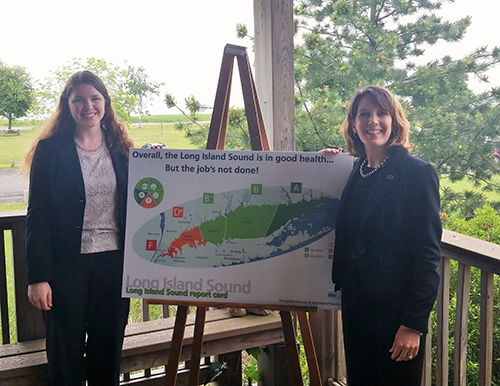
About the author
Suzanne Webster
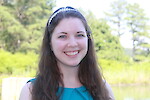
Suzi Webster is a PhD Candidate at UMCES. Suzi's dissertation research investigates stakeholder perspectives on how citizen science can contribute to scientific research that informs collaborative and innovative environmental management decisions. Her work provides evidence-based recommendations for expanded public engagement in environmental science and management in the Chesapeake Bay and beyond. Suzi is currently a Knauss Marine Policy Fellow, and she works in NOAA’s Technology Partnerships Office as their first Stakeholder Engagement and Communications Specialist.
Previously, Suzi worked as a Graduate Assistant at IAN for six years. During her time at IAN, she contributed to various communications products, led an effort to create a citizen science monitoring program, and assisted in developing and teaching a variety of graduate- and professional-level courses relating to environmental management, science communication, and interdisciplinary environmental research. Before joining IAN, Suzi worked as a research assistant at the Marine Biological Laboratory in Woods Hole, MA and received a B.S. in Biology and Anthropology from the University of Notre Dame.

